Wet flies are once again very popular, but most we see are tied for presentation and not so much for fishing. Bob Petti enjoys tying wet flies and tries to style his after the fishing flies that are popular in the UK using colors and materials that work well in the water.
It has been quite some time since I tied my first set of wet flies for GFF. At the time - I remember being happy that I was just able to get the quill slips somewhat upright on the hook and not totally squashed. The few flies with duck flank wings - forget it - especially bronze mallard. Total horror show. I basically copied the Bastian style of fly tying - with a few alteration here or there such as hackle fiber tails instead of quill slips. The quill slips were all "concave out" such that the wings flared away from the body, the hackles were just a gathered bunch of hen saddle pinched under the head, and the hooks were all larger than I would fish in practice - most being on size 8 3906's.

A couple hundred yards of wet fly nirvana.
I've changed my style since then. I prefer a wound hackle of suitable hen or soft cock - not too webby - not too stiff. My wings are now tied concave in - with the shiny parts facing out. Through practice (one winter I tied nothing but wet flies save for a handful of streamers), I've gotten better at flank wings, too. Now I tie most of the flies in fishing size - mostly 12's with a few 10's and 14's tossed in. When I get down to the tips of mallard quills, I'll even go for a few 16's in a simple quill bodied wet.
I'm still learning. While I have gotten better at bronze mallard wings, I still struggle with teal flank wings. I still leave the heads with a single coat of varnish - rather than carefully applied 3 coats for that glossy smooth finish. I like the looks of the fancy polished head flies - but I'm too lazy. I know it is cliche to say "they're just fishing flies" - as if that really matters - fishing flies shouldn't be tied well, too? - but there you go. One coat of lacquer and in the box.
I think the biggest improvement in my tying is learning when to dial it back and present a sparse fly. Sparse flies sink better, swim better, are more transluscent, and move more in the water. They fish better, you know? You'd think it would be easy to tie a slim sparse fly - fewer materials should go on the hook easier, right? - but it's not. I mean - yeah it is easy to tie the fly - but it's not always easy to be restrained with the materials. Just a few whisks for the tail - just a couple turns of hackle - a thin dubbed body. You have to pay attention to those things or the fly can get away from you.
I fish these flies - but not slavishly like some who make outrageous claims of success using them. A hungry fish will inhale anything that catches its eye, after all, and the long and rich history of wet fly fishing does not need my support. I have caught a lot of trout and tied a lot of flies, so these days mostly I do what feels fun. I enjoy tying wet flies - and I will often look for excuses to fish them. One day I fished the heavy pocket water downstream of the Five Arches Bridge on the Esopus, flipping a Pearly Invicta in front of me. I was hoping for a fish - but never did connect. But - you know - that's fine. It was fun to watch the fly do it's thing. I have a box of beadhead nymphs at the ready for those times when all I want to do is hook a fish.
A lot of these flies are originated somewhere in the UK. A few years ago I got a bug to tie UK wet flies as authentically as possible, so I got some hackles from - you guessed it - the UK. Nobody in the US sells a claret like a true Irish claret, and nowhere in the states can you find a vivid golden olive, especially that "West of Ireland" shade that seems to glow. It is also hard to find a true "red game" - a rich reddish brown hackle found on cheap cock necks (originally from fighting chickens, or so the legend goes) that is not dry fly quality but still retains the sheen of a good hackle. So I got some appropriate dubbing (Frankie McPhillips), some good hackles, and set out to learn these flies.
|
|
|
Teal and BlackTail: Golden Pheasant Tippet NOTES: There are many color variations of this fly, a Teal and Green also being quite popular. |
|
|
|
|
CalderTail: Barred Wood Duck NOTES: This is from Bergman's book, a pretty fly with some interesting tying challenges. Sometimes peacock sword refuses to cooperate and sit along the top of the wing. Sometimes? Most times! |
|
|
|
|
March BrownTail: Bronze Mallard NOTES:A simply fly that is about as buggy as they come. Everything is mottled, and there is just a hint of sparkle. An all time great fishing fly. |
|
|
|
|
Leadwing CoachmanTag: Flat Gold Tinsel NOTES: In the US, this wet fly is best when the Isonychia are hatching. Drift it and swing it along the shoreline when the nymphs are migrating and you're apt to pick up a few opportunistic trout. Just be careful with your positioning and wading, as trout along the shore can be a little spooky. |
|
|
|
|
Heckham SilverTail: Golden Pheasant Tippet NOTES: Just a cool looking fly - sparse, dark, with some sparkle in the body and sheen in the wing. |
|
|
|
|
Teal Blue and SilverTail: Golden Pheasant Tippet NOTES: One of my all time favorites. More well known as a sea trout fly in the UK, it has served me well fishing small streams that have a good population of tiny minnow fry. |
|
|
|
|
Golden OliveTail: Golden Pheasant Tippet NOTES: The pattern is a classic, but the hot floss tag is a nod to Frankie McPhillips. He sells flies on his website and many sport a tag of that famous fluorescent floss. |
|
|
|
|
BouncerTag: Orange Floss NOTES: I listed this as a variant because it is not 100% true to the pattern as listed in Bergman, but the spirit is there. |
|
|
|
|
Grey MonkeyTail: Teal Flank NOTES: This one is from "Tying Flies in the Irish Style" by EJ Malone. Very few wet flies sport a grizzly hackle. This one is super buggy. |
|
|
|
|
WOI Golden OliveTail: Golden Pheasant Tippet NOTES: I am particularly fond of this color. Back when we used to take our annual trip to Connetquot on Long Island, I bet this would have been deadly. |
|
|
|
|
Jenny WrenTail: Golden Pheasant Crest and Bronze Mallard NOTES: Saw this pattern is a very old "Fly Fishing and Fly Tying" magazine. It is tricky with all the doubled materials - double tail, double hackle, double wing. The head can get out of hand if you don't plan ahead and leave ample space. A nice dark buggy pattern - but a little fiddly to tie. |
|
|
|
|
Mallard and ClaretTail: Golden Pheasant Tippet NOTES: The classic Irish pattern which can be tied in a number of different shades. As Chris Del Plato will tell you, US trout love claret, too. |
|
|
|
|
Pearly InvictaTail: Golden Pheasant Crest NOTES: Saw this in Stan Headley's "Trout and Salmon Flies of Scotland" and couldn't resist trying a few. It is a buggy fly with the palmered hackle and mottled wing, but then there is that sparkly body and vivid Jay throat. A real pretty fly. |
|
|
|
|
Light CahillTail: Cream Hen NOTES: A US fly that is good to have handy during summer emergences of the light colored mayflies. I mean yeah - you could fish a dun or an emerger - but why when there is a beautiful wet fly made just for the occasion? |
|
|
|
|
DunkeldTail: Golden Pheasant Crest NOTES: A great combination of materials on this fly - as well as the similar Thunder and Lightning (black floss body). Tying in those tiny JC cheeks can try your patience, but it is so worth it. |
|
|
|
|
AlexandraTail: Red Hackle NOTES: Everyone has heard the story of the Alexandra. If you are going to carry wet flies - this should be one of them. It has it all - red, peacock, silver, black - a cornucopia of fish catching materials. |
|
|
|
|
ProfessorTail: Red Hackle NOTES: A simple wet fly that is probably in everyone's fly box. Of all the mallard flank winged wets - this is by far the most popular and well known. |
|
|
|
|
Silver March BrownTail: Bronze Mallard NOTES: There is also a gold version. A good fly to use when you want something mottled and buggy but with a bit more flash. |
|
|
|
|
Dark CahillTail: Brown Hackle NOTES: The dark companion to the Light Cahill above for Hendrickon season. The original calls for a body of muskrat, but I really like to use natural gray squirrel here, as it makes a nice spikey body with plenty of mottling. Do as you see fit. |
|
|
|
|
Greenwell's GloryTying Thread: Yellow Pearsall's Gossamer, heavily waxed with brown cobbler's wax to attain an olive hue. NOTES: Perhaps the oldest fly on this page? The origins go WAY back. If you don't have the right Pearsall's thread and dark cobbler's wax, you can substitute an appropriate colored olive floss, but oh that waxed thread looks great. I have just a little blob of the dark wax that I save for this pattern alone. |
|
|
|
|
- Log in to post comments



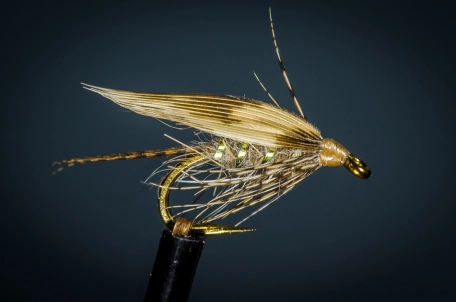


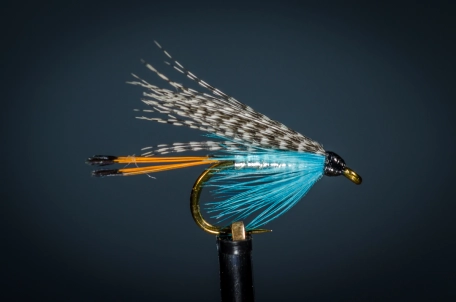
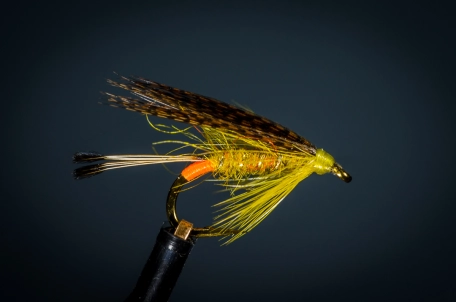






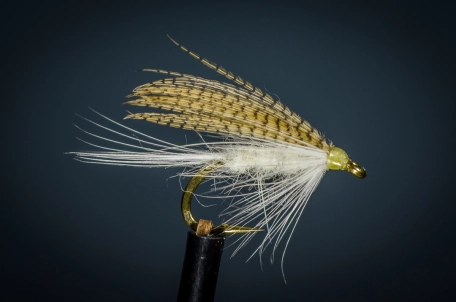



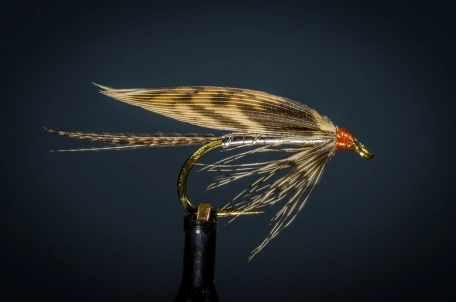

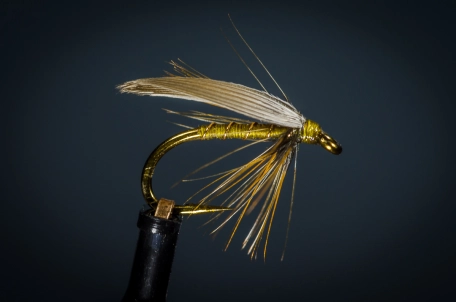







I've tied and fished
I've tied and fished wet flies for many years. I can't believe that so many have completely gotten away from them because , as demonstrated here, they are beautiful , colorful flies to tie and they certainly are still very effective patterns. Nice article , Bob Petti and very beautiful work.
Well done Bob Petty,
Well done Bob Petty, Well done!!!!
Bob,
Beautifu
Bob,
Beautiful flies, beautiful photos. It is time to take a break from my archaeology research to tie these wet flies for fun. The
Heckham Silver is definitely a cool looking fly, almost sinister in appearance. The showy Alexandra counters the suave
almost Dracula countenance of the Heckham Silver. Who would win the prize? I suspect it would be the Alexandra.
Bob, your flies are
Bob, your flies are works of art. I think it's safe to say you have mastered the art of fly tying. Whether you catch a fish or not, you're right about tying each fly with purpose and the beauty. If you're you are going to tie a fly it should be the best you can.
Best regards,
Richard
wet flies
This is a great article and beautiful photos and patterns. I have been trout fishing for over 50 years but have never used or tied wet flies or soft hackles. I have just been a nymph, streamer, dry fly guy but just this year have gotten interested in fishing wet flies and soft hackles after talking to an elderly retired doctor in Wisconsin who started the first TU chapter in central WI. He has forgotten more about fly fishing that I ever knew. I can't wait to try what I have learned this next season and use the flies I tied. Thanks again for a very informative article.
Wet flies
I like a lot of your flies, I'm a sea trout fly Fisher so a size 10,8,6 there great
Fly tying
Great article. Just started tying wet flies, after reading George Barron’s book. This article has added another dimension to my tying. Thanks